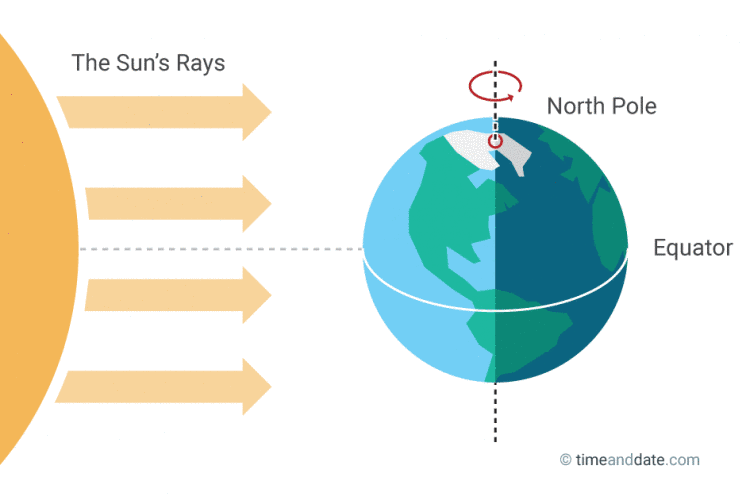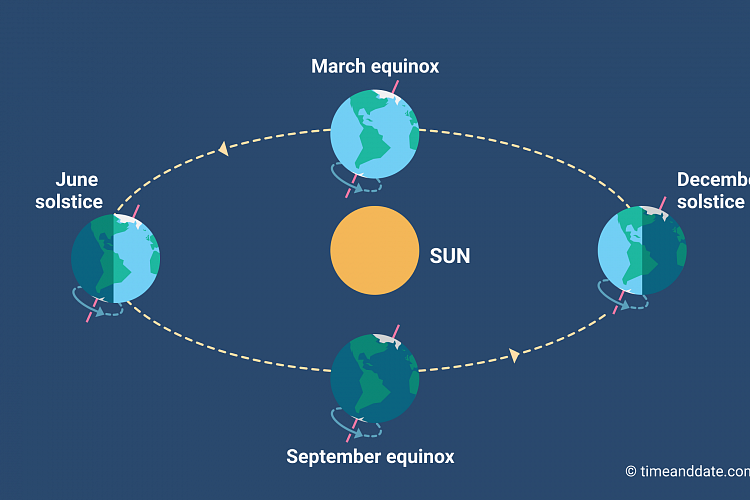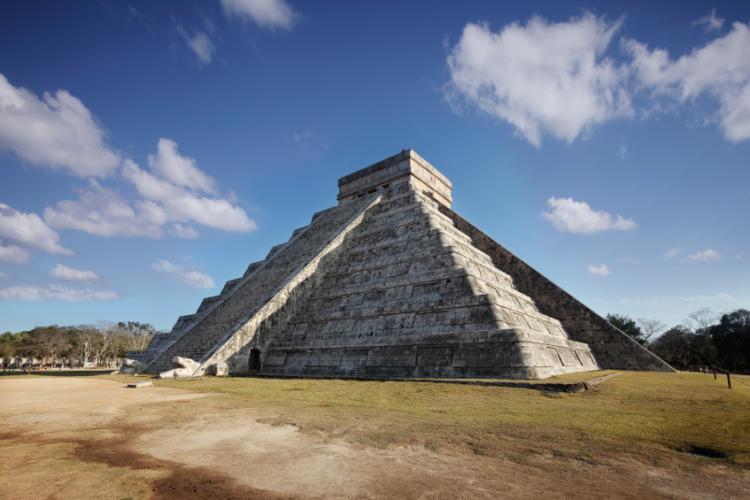March Equinox - Equal Day and Night, Nearly
There are two equinoxes every year – in March and September – when the Sun shines directly on the equator and the length of night and day are nearly equal.

The Earth during the equinox. (Not to scale)
March Equinox in Universal Coordinated Time is on
Monday, 20 March 2017, 10:29 UTC
Monday, 20 March 2017, 10:29 UTC
- Local times for March Equinox 2017 worldwide
- Sunrise, sunset and day length around March Equinox 2017
- Day and Night map for March Equinox 2017
- Countdown to March Equinox 2017 in Ipoh, Malaysia
- Equinoxes and solstices from 2000–2049
The Sun Crosses the Equator
The March equinox marks the moment the Sun crosses the celestial equator – the imaginary line in the sky above the Earth’s equator – from south to north. This happens on March 19, 20, or 21 every year.
10 Facts About the March Equinox
Northern Spring – Southern Fall

Equinoxes and solstices are opposite on either side of the equator, and the March equinox is also known as the "spring (vernal) equinox" in the Northern Hemisphere and as the "autumnal (fall) equinox" in the Southern Hemisphere.
Why Equinox?
On the equinox, night and day are nearly the same length – 12 hours – all over the world. This is the reason it's called an “equinox”, derived from Latin, meaning "equal night". However, in reality, equinoxes don't have exactly 12 hours of daylight.
What Happens on the Equinox?
The Earth's axis is always tilted at an angle of about 23.4° in relation to the ecliptic, the imaginary plane created by the Earth's path around the Sun. On any other day of the year, either the Southern Hemisphere or the Northern Hemisphere tilts a little towards the Sun. But on the two equinoxes, the tilt of the Earth's axis is perpendicular to the Sun's rays, like the illustration shows.
Used to Measure Tropical Year
The March equinox is often used by astronomers to measure a tropical year – the mean time it takes for the Earth to complete a single orbit around the Sun. Also known as a solar year, a tropical year is approximately 365 days, 5 hours, 48 minutes and 45 seconds long.
Unlike the mean tropical year which is an average value, the time between one March equinox to the next can vary by a few minutes to as much as 30 minutes each year. For example, the time between the March Equinox in 2015 and the March Equinox in 2016 was 365 days, 5 hours, 44 minutes, and 56 seconds, while the same duration between the March Equinoxes in 2016 and 2017 will be 365 days, 5 hours, 58 minutes, and 36 seconds.
Celebrating New Beginnings
The March equinox has long been celebrated as a time of rebirth in the Northern Hemisphere. Many cultures celebrate spring festivals and holidays around the March equinox, like Easter and Passover.
The Snake of Sunlight

One of the most famous ancient Spring equinox celebrations was the Mayan sacrificial ritual by the main pyramid at Chichen Itza, Mexico.
The main pyramid – also known as El Castillo – has four staircases running from the top to the bottom of the pyramid's faces, notorious for the bloody human sacrifices that used to take place here.
The staircases are built at a carefully calculated angle which makes it look like an enormous snake of sunlight slithers down the stairs on the day of the equinox.
The Mayan Calendar was very precise in this respect, but today the Mayan calendar is most famous for ending exactly at 11:11 UTC on the 2012 December Solstice.
Knowledge of the equinoxes and solstices is also crucial in developing dependable calendars, another thing the Mayans clearly had got the hang of.
Source : http://www.timeanddate.com
No comments:
Post a Comment